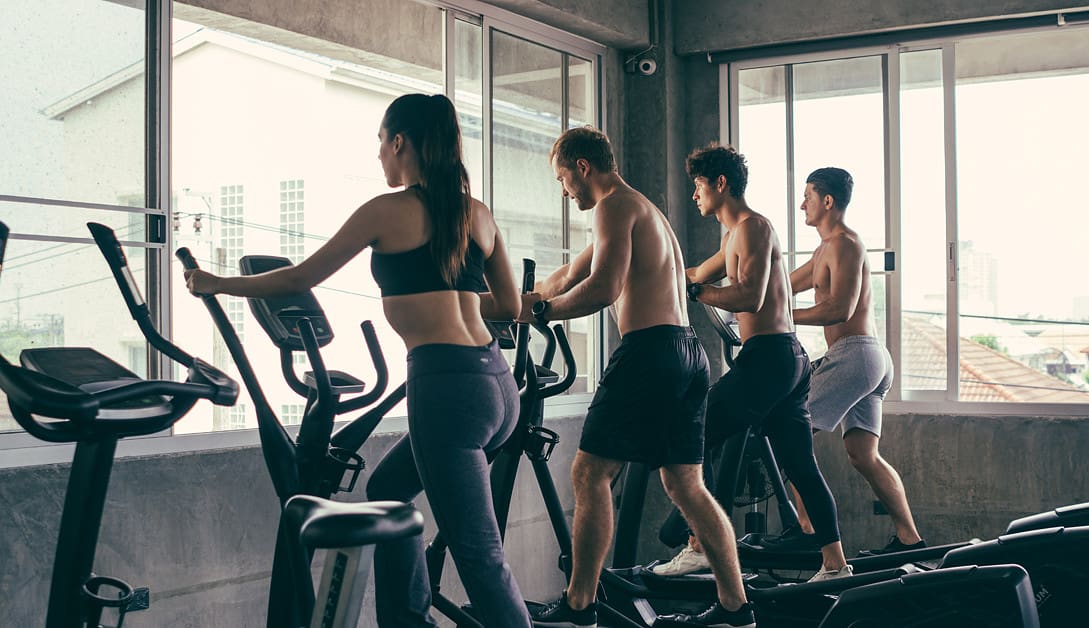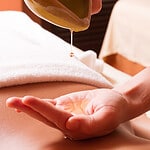Identify the Problem
Are your knees hurting when you cycle? Find out what the problem is! Is it muscles, alignment, or an injury? Stretching can help with muscle pain. But if it’s misalignment or an injury, you may need to consult a professional.
Once you know what the issue is, start looking for joint-friendly exercises. Ones that will help with knee pain when you cycle!
Understand the cause of the knee pain
Knee pain can be caused by various conditions. Establishing the cause is essential for an effective treatment. Structural issues, such as injury to ligaments or tendons, and biomechanical misalignment of joints, could be the cause. Overuse due to intense exercise and biochemical irritation due to inflammation, arthritis, gout, and other systemic illnesses could also be contributing factors.
Making the correct diagnosis is essential for successful care and long-term pain relief. Structural problems should be examined first, including joint instability, muscle imbalances and weakness, and poor alignment of the knee or muscles. Biochemical imbalances should also be considered. Some patients may need medication if their pain is due to systemic illnesses or signs of inflammation from an autoimmune issue.
Other factors should be explored. This includes:
- Lifestyle changes such as nutrition and exercise, and stress levels.
- Psychological distress is linked with more chronic pain in adults.
Taking all these factors into account will give a better understanding of the issue and help create an individualized treatment plan that works best to ease knee pain.
Assess the severity of the knee pain
It’s essential to evaluate the severity of your knee pain before you exercise. If there’s swelling, redness, difficulty bearing weight or intense pain, it’s recommended to seek medical advice first.
In cases like tendonitis, tendinosis or weak muscles, a physician may prescribe physical therapy. This reduces strain, helps short-term recovery from inflammation and strengthens the affected area. Physical therapy also helps with regaining full functionality for activities like cycling with less pain in the future.
We suggest you consult a medical professional for personalized advice about assessing severity of your knee pain and working out a joint-friendly exercise program for cycling with knee pain.
Choose the Right Exercise
Do you have knee pain while cycling? You need joint-friendly exercises to stay active without harming the joint. It depends on the severity and type of the pain, your fitness level and general health. Here’s a guide to help you find the best exercise for your condition:
- Identify the type and severity of the pain.
- Evaluate your fitness level and general health.
- Choose exercises that are low impact and joint-friendly.
- Start with basic exercises and gradually increase intensity.
- Listen to your body and adjust your routine as needed.
Consider low-impact exercises
Knee pain from cycling needs attention. Strength-training and low-impact exercises can help. These include swimming, walking, and elliptical training. Build up gradually to a comfortable yet challenging level. Two low-impact cross-training workouts per week are ideal.
Yoga is also great for knee pain. Warrior II, tree pose, cobra, and chair stretches help to reduce tension. Start slowly and build up steadily.
Consider strength training exercises
Strengthening your knee muscles is key for reducing pain and bettering your cycling performance. Include these exercises in your training for both immediate and long-term effects.
- Lunges: Stand with feet hip-width apart. Step forward with one leg. Bend both knees until back knee nearly touches the ground. Press through front heel to return, alternating legs.
- Side Lying Leg Raises: Lie on side. Put a foam roller/towel below bent knee. Keep leg in line with hip and shoulder. Slowly raise top leg toward ceiling, contracting at the top. Lower slowly and repeat. Then switch sides.
- Straight Leg Raises: Sit in a chair or in bed with legs out in front. Engage core muscles to support lumbar spine. Lift one leg up until lower back slightly rounds. Pause at peak contraction point. Return to starting position and repeat. Then switch sides.
Before beginning any program for joint health/injury rehab, talk with a trained medical professional.
Consider stretching exercises
If you have knee pain, cycling is not the only exercise to consider. Stretching can help increase agility and flexibility of your muscles and joints, reducing pressure on the knee.
Calf and quad stretches are good for relieving knee pain.
Strengthening exercises can improve joint stability. Squats with low weights or bodyweight exercises like lunges are great for building knee strength. Make sure you complete these exercises with good form.
Posture is vital for joint health, so keep your core engaged in a neutral position during stretching and strengthening workouts. This will help prevent further injury or damage to your knees.
Safety Considerations
When cycling with knee pain, remember to stay safe. Start with a warm-up and some stretching. Adjust your bike settings for correct posture. Watch the intensity; don’t overwork your body. Use an appropriate bike and supportive shoes to protect your joints. Safety first!
Wear the proper protective gear
It is vital to wear the right protective gear when cycling. This keeps you safe from falls, crashes, and other injuries.
- Helmet – get a good, fitting helmet.
- Shoes – wear close-toed shoes which won’t slip off.
- Gloves – will protect your hands in a fall.
- Bright clothes – if you cycle at night or in low-light areas.
- Knee pads – choose one that fits your size, weight and shape. Secure it with straps or fasteners.
- Eye protection – sunglasses or cycling glasses can reduce glare from sunlight and offer protection from dust. Get ones that don’t obstruct your vision. Poor visibility can lead to more harm to your joints!
Choose the right bike for your body type
Body size is the most important thing when selecting a bike. It’s essential to get a frame size that fits your height, weight and build. This way you can be comfortable and safe while cycling.
Road bikes are usually better for smaller riders or those who want a faster ride. Whereas, mountain bikes are better for taller people and bumpy terrain. Electric-assist bikes can help if cycling long distances causes discomfort or fatigue.
Safety features, such as brakes, gears and suspension systems, vary depending on the type of bike you choose. Always check that the brakes work before buying a bike. Suspension forks reduce the impact of rough terrain. Plus, padded seats make cycling more comfortable. This also improves safety for long journeys.
Make sure you have the proper technique
When working in the field or in a lab, safety protocols must be followed.
- Know how to use equipment correctly and practice good personal hygiene.
- Understand hazardous materials handling and disposal.
- Read instructions every time before using equipment or conducting an experiment.
- Be aware of surroundings to anticipate potential hazards.
- Wear protective clothing at all times when doing experiments or tasks.
- Wear gloves when handling hazardous material such as chemicals or solvents.
- Take regular breaks while working with tools to prevent fatigue or injury.
- Keep the work area clean and organized at all times for safety.
Recovery
Recovery is an absolute must for any cycling program. Especially if you have knee pain. An excellent recovery routine should include various exercises. Especially joint-friendly workouts for cycling. This article will focus on this kind of recovery. Here are some of the best joint-friendly exercises for cycling with knee pain:
Get adequate rest and sleep
Get enough rest and sleep for successful recovery. Quality sleep of 7-9 hours helps your body regulate stress and heal. Before bed, avoid electronics, caffeine and napping during the day. Set a regular bedtime and get up in the morning.
Breaks throughout the day help restore energy. Take a walk or stretch. Listen to music. Meditate. Do yoga or mindfulness practices. Take a hot shower. Cook something special for yourself. All these little things allow you to relax and restore from reality’s pressure and stressors.
Apply ice to the affected area
Knee or joint pain needs time to heal. To lessen inflammation and swelling, use an ice pack on the area. Cover it with thin cloth, and apply for 15 minutes several times a day. For even better results, use the RICE method. Anti-inflammatory medication can also help relieve pain and reduce inflammation.
To strengthen weakened muscles, regular stretching is recommended. Lastly, get enough rest between sessions to prevent injuries from getting worse and speed up healing.
Take anti-inflammatory medications, if necessary
Persistent inflammation and pain? Your doc might suggest anti-inflammatory meds. These can lessen inflammation and ease the pains of recovery. Aspirin, ibuprofen, naproxen, and celecoxib are examples. Talk to your physician to find the best medication for you.
Also, to get the full benefit and avoid side effects, follow your doctor’s instructions.
Frequently Asked Questions
Q1: What types of exercise are best for a person with knee pain?
A1: Low-impact exercises such as swimming, yoga, and cycling are great options for those with knee pain. It is important to avoid high-impact activities such as running or jumping.
Q2: How can cycling be made joint-friendly?
A2: Cycling can be made joint-friendly by using a stationary or recumbent bike, avoiding hills or any other extreme changes in terrain, and using a low resistance setting to reduce the amount of strain on the knees.
Q3: What other precautions should I take when cycling with knee pain?
A3: When cycling with knee pain, it is important to warm up before and stretch after the ride, to stay hydrated, and to wear a knee brace or other supportive gear to reduce the risk of further injury.





